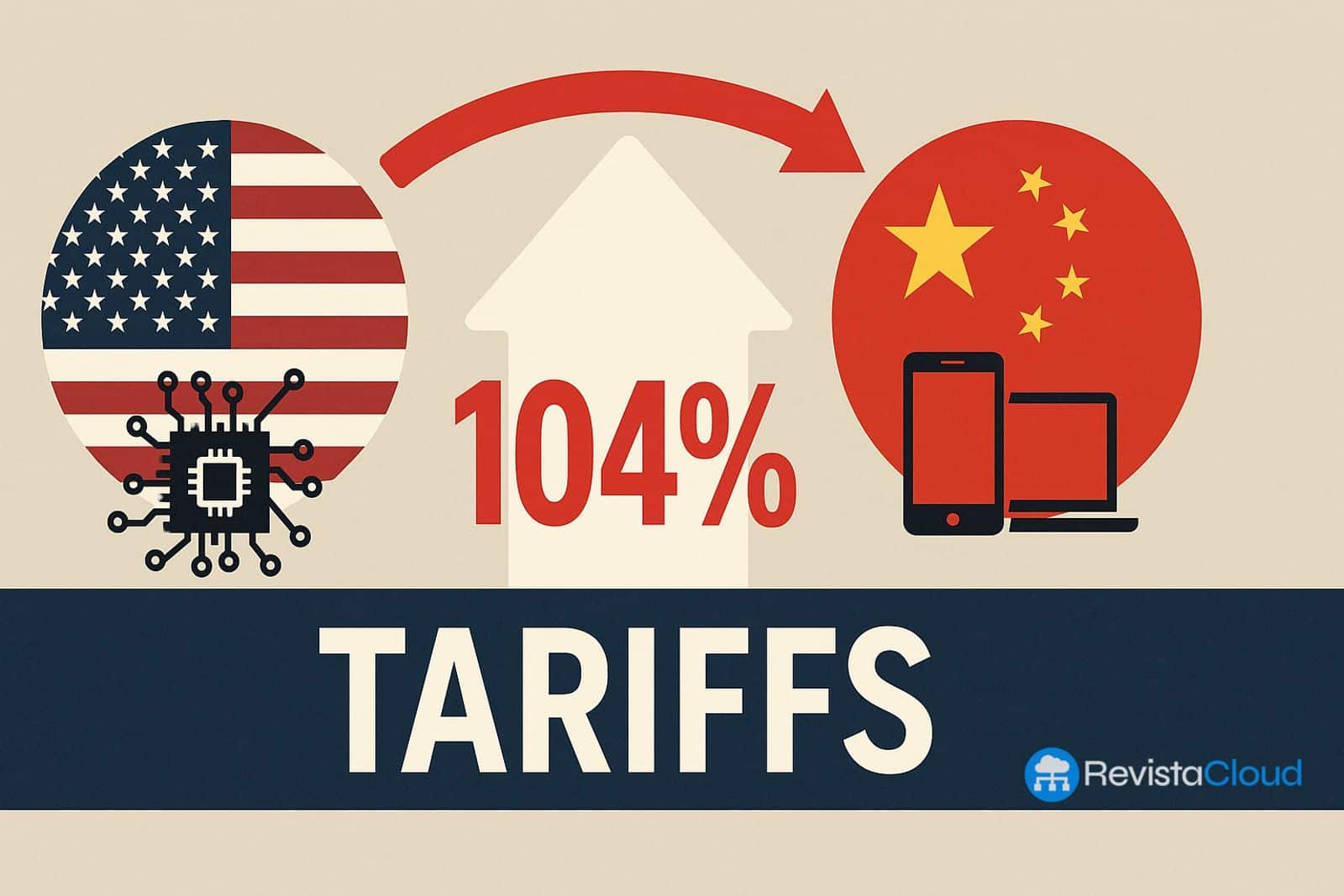With tariffs of up to 145%, the Trump administration has unleashed a wave of tensions shaking global supply chains. The tech sector, deeply interconnected between the two powers, faces a volatile landscape with potential impacts on prices, production, and digital geopolitics.
The new Donald Trump administration quickly made its mark on international trade. Shortly after taking office as the 47th president of the United States, he signed the “America First Trade Policy” memorandum, which led to a series of executive orders implementing widespread tariff increases, affecting allies like Mexico, Canada, and Peru.
However, China has been the primary target. In just three months, tariffs on Chinese imports escalated from an initial 10% to 145%, sparking what is now called a new technological trade war.
Global Supply Chains Under Strain
The most affected sector is technology. The mutual dependence between the US and China in this industry is profound: American companies like Apple, Dell, and Tesla rely on assembly in China, while China needs access to advanced semiconductors, proprietary software, and precision machinery from the US.
IDC business infrastructure analyst José Paredes summarizes it this way:
> “An escalation in tariffs can break integrated value chains. There is a very clear interdependency between both countries, especially in electronic components, smartphones, and servers.”
The effects were immediate. After the “Liberation Day” announcement, the Nasdaq tech index dropped 10%. Apple lost 12% of its market value, Tesla faced uncertainty over its Shanghai factory, and Dell plummeted 17%. While giants like Microsoft and Amazon weathered better due to their focus on software and services, overall market nervousness was evident.
Tariffs, Exclusions, and Business Pressure
The tech industry did not remain passive. Companies such as Apple directly pressured the US government for exemptions, and they succeeded. Key products like smartphones, computers, routers, memory, and semiconductor equipment were exempted from the 125% tariffs.
Apple CEO Tim Cook avoided openly criticizing Trump, cultivated relationships in Washington, and managed to shield much of its supply chain. Other companies adopted similar strategies, though details remain confidential.
Despite exemptions, the environment remains volatile. Executive Order 14316 extended the suspension of technological tariffs until August 1, but Trump has warned there will be no further extensions unless key countries like Japan, South Korea, or Thailand reach agreements.
Peru: Limited Impact So Far
In Peru, the direct impact has been moderate. A 10% tariff was imposed on Peruvian exports to the US, but no measures affected imports.
Fernando Grados, CEO of Dominio Consultores, comments:
> “Honestly, it hasn’t affected us. Many devices sold in Peru come directly from Mexico or China, not US. Also, the Peruvian market has shown growth, except for smartphones.”
Data indicates that Peru’s IT market has grown across most categories—computers, TVs, printers—instead of shrinking, with the exception of mobile phones, which declined by 8-9% in the first quarter of 2025.
Will We Face a Global Technological Fragmentation?
Beyond immediate economic effects, there’s a looming possibility of fragmentation in the global digital ecosystem. “Each bloc tries to impose its standards and platforms, which could lead to technological fragmentation,” warns IDC’s Paredes.
The US has barred Huawei and ZTE 5G equipment, while China promotes its Harmony OS operating system and develops its own chips after restrictions on Nvidia and ARM.
Companies like TSMC are already reconfiguring plans: halting a plant in Japan and accelerating expansion in Arizona to align with US industrial policies. Apple, for its part, is speeding up assembly in India and Vietnam to reduce dependence on China before 2026.
What’s Next?
As August 1 approaches, tensions are mounting. Tariffs returning could cause a 31% increase in smartphone prices, 34% in laptops, and 69% in consoles, according to estimates by the Consumer Technology Association (CTA).
In a world where technology underpins the economy, these trade war effects extend beyond trade balances—they could shape the new geopolitical, technological, and economic rules of the 21st century.
For now, markets are watching cautiously. Everything could change with a new executive order. And in this power game, the only consensus is that the status quo is over.
via: ctoperu

